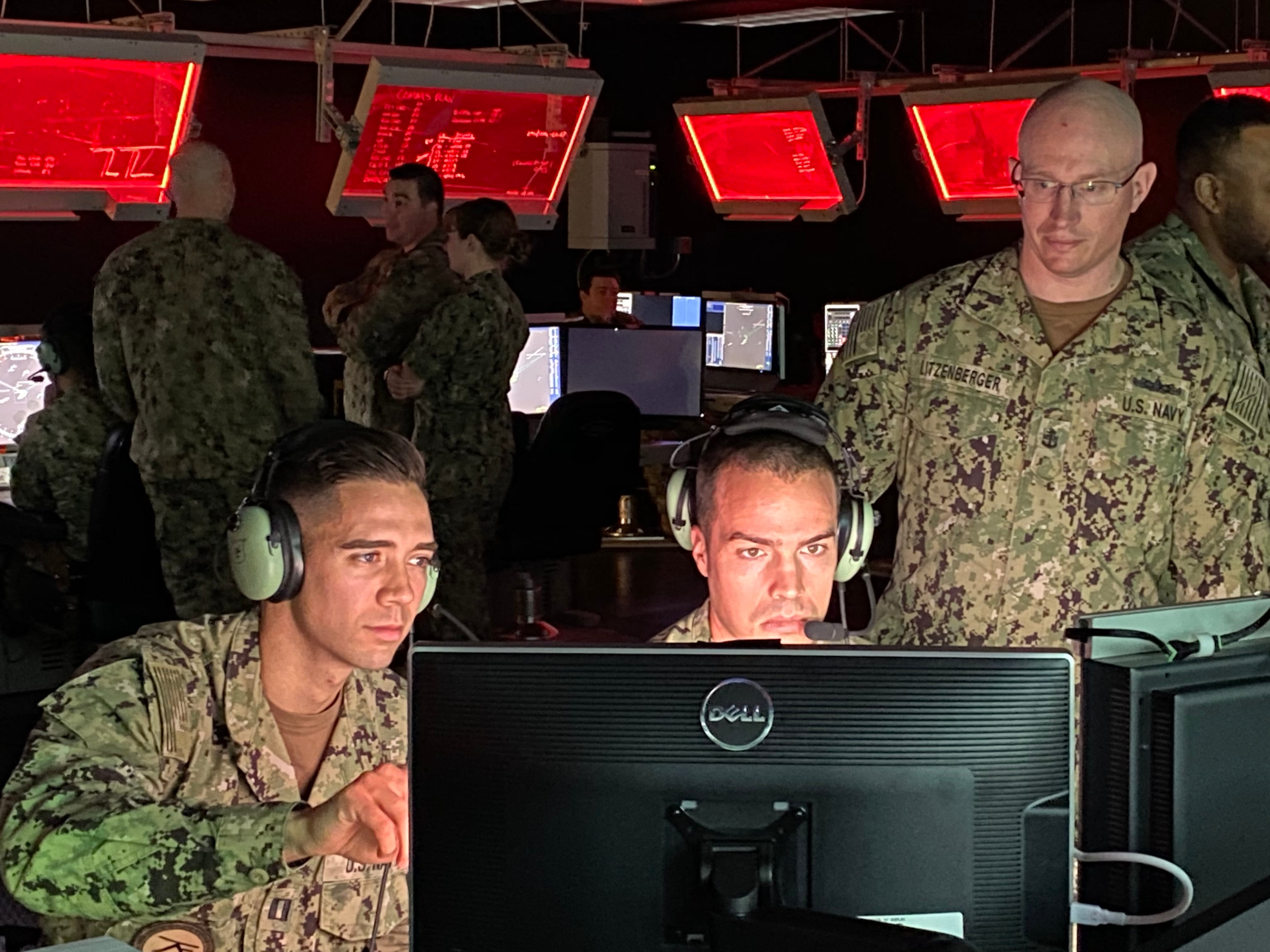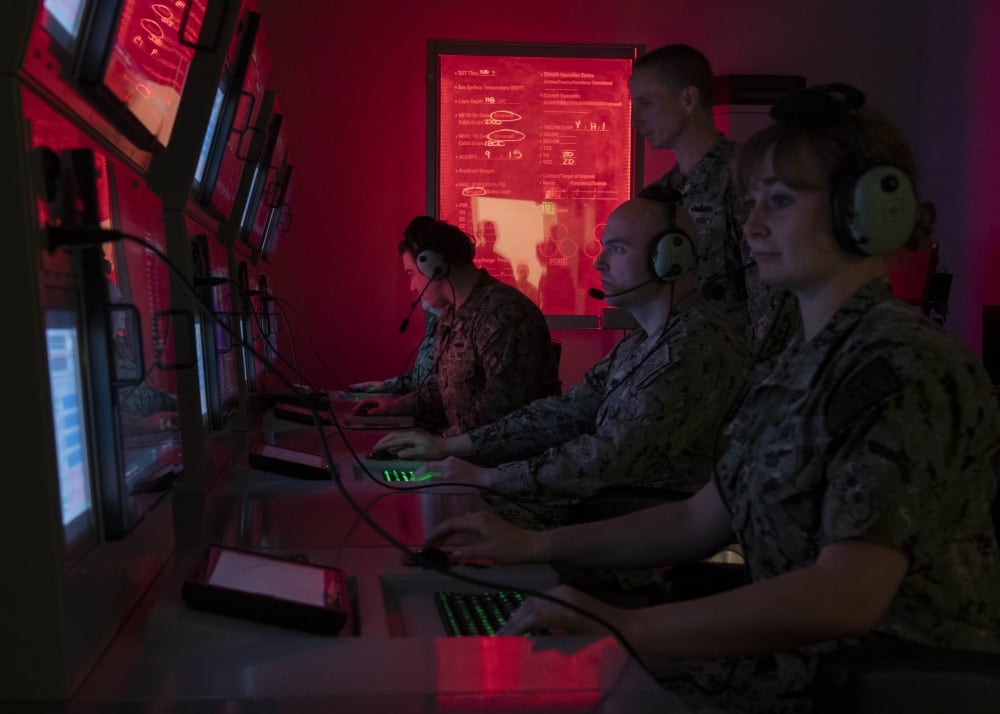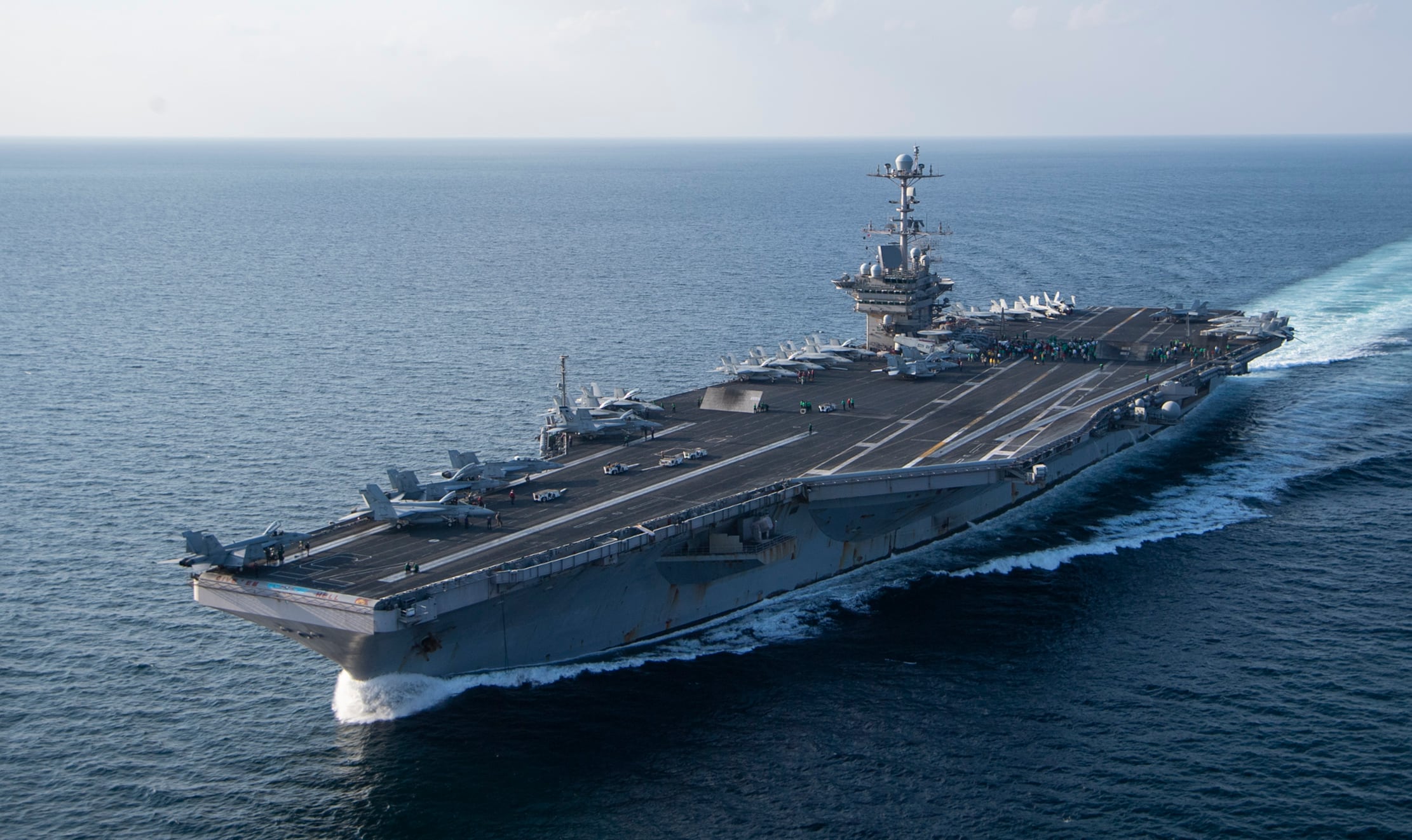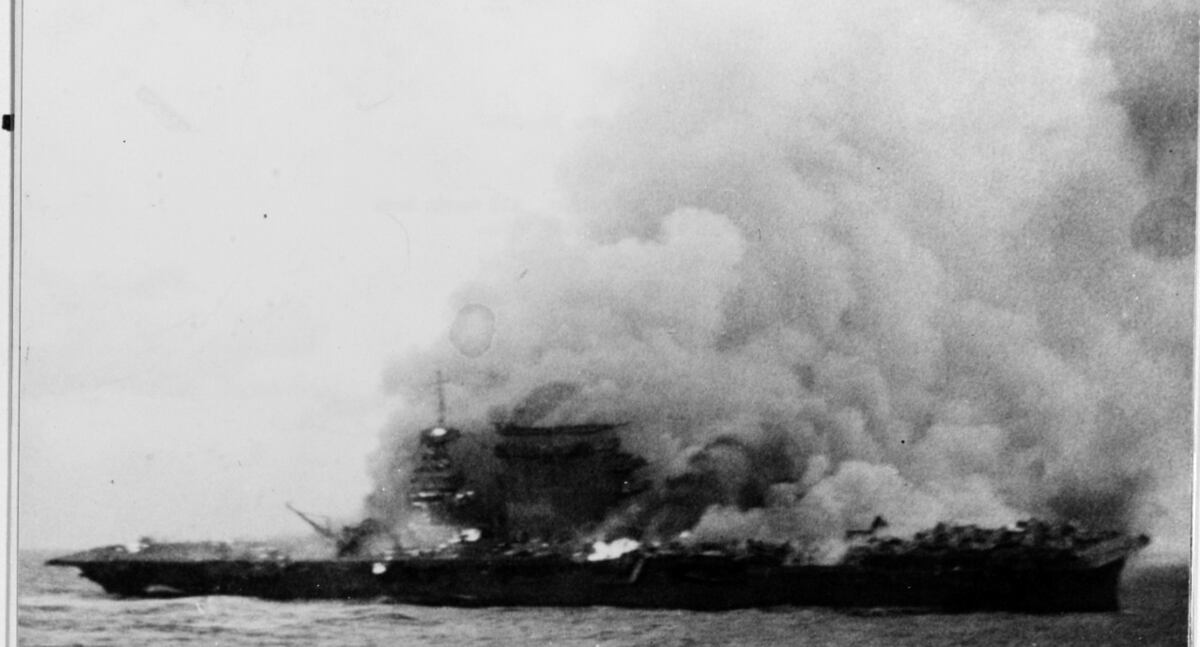SAN DIEGO – Lt. Cmdr. Kyle Sullivan will join the rest of his shipmates from the guided-missile destroyer Benfold when they sail the waters of U.S. 7th Fleet later this year.
The Japan-based ship and others like it are tasked with patrolling a rough neighborhood, including disputed waters contested by a rising China or bellicose North Korea.
But Benfold is finishing up 15 months of repairs in the yard. With its combat system turned off, Sullivan and other shipmates arrived at Naval Base San Diego late last month to sharpen their battle skills in one of the sea service’s most technologically advanced trainers.
The $20 million Combined Integrated Air and Missile Defense/Anti-Submarine Warfare Trainer debuted here in late 2018 and a sister or CIAT opened in Norfolk in mid-2019.
“Anyone that knows anything about the ships forward-deployed in Japan is the promised training doesn’t always materialize, depending on the geopolitical situation,” Sullivan said. “We’re sometimes asked to immediately go on missions, so we’re preparing ourselves with the expectation that that may occur. Hopefully it won’t."

The CIAT replicates the combat suite of a warship, allowing green sailors and seasoned shipmates alike the chance to hone their skills in focused, adaptable and real world scenarios.
That might seem particularly important to sailors in the 7th Fleet, but Benfold’s crew became the first Japan-based team to train in the CIAT.
The crew is slated to spend a few months training on board their ship when it returns to the water in June, but that time could be cut quickly if a humanitarian disaster or conflict occurs in the bustling 7th Fleet’s area of responsibility.
“We want to be ready if we are called to serve a little earlier than expected because of how close we are to some of our competitors out there in 7th Fleet,” Sullivan said.
In the CIAT, teams can watch SM-2 missiles launch or track helicopter movements across sprawling projections of the virtual seas surrounding their ship.
Debriefing sessions let instructors show sailors the precise moment they made a good or bad decision.
Scenarios are based on threats generated by intelligence culled from the real world and updated frequently. Red teams in a room two doors away control an enemy’s movements.
“They’re being driven by real people,” said Lt. Aaron Van Driessche, a warfare tactics instructor assigned to the CIAT. “When we attack an adversary, the adversary can maneuver and attack back.”
Sonar trainers replicate the topography of the South China Sea. Sailors experience what it takes to fight in rough seas or pounding rain.
“We can completely change their environment,” Van Driessche said. “We can put you off the coast of Hawaii. We can put you off the coast of California. Or we can put you in ‘Satan’s Throat’ in the South China Sea.”
Navy officials said the CIAT hosted more than 2,700 individual training events last year.

For Van Driessche, helping the surface fleet hone their combat skills is personal.
He was the aft steering officer on board the guided-missile destroyer John S. McCain during the Aug. 21, 2017, collision that killed 10 of his shipmates.
Van Driessche said his experience, and the training shortfalls that led to the collision, bring urgency to his mission at the CIAT and making sure the surface fleet is trained to fight.
“We should live (tactical proficiency) every day," he told Navy Times.
Since arriving here, Van Driessche has become an enthusiastic proselytizer for the CIAT.
“I love teaching, I love instructing, because the other side is having to answer the question of why wasn’t this prioritized earlier,” he said.
Commanding officers interested in scheduling a time can contact their local Center for Surface Combat Systems detachment, but crews in the basic or advanced phases of the Optimized Fleet Response Plan get priority on the trainers, according to Lt. Cmdr. Patricia Kreuzberger, a Naval Surfaces Forces spokeswoman.
RELATED

Both seasoned and new shipmates from Benfold made the trip to San Diego to participate in a training campaign their commanders dubbed “Operation Yorktown,” an homage to the World War II aircraft carrier that sustained heavy damage during the Battle of the Coral Sea in 1942.
After just three days of emergency repairs, the carrier rejoined the war and helped win the Battle of Midway, but was sunk by a Japanese submarine after being damaged during the fight.
“That’s kind of the mindset we want sailors to have,” Sullivan said. “Get ready as soon as possible, be ready as soon as we finish the avail.”
“Coming out here to San Diego has been a part of that, to try to get ahead of the game, get training knocked out while our ship is still in the yards, while our combat system is turned off,” he said. “Be prepared to reenter the fleet as a capable warship immediately.”
When Benfold returns to sea, lessons already learned from the CIAT will let them “focus on the rough spots,” Sullivan said.
Training on a ship is generally more low tech and generic than what the CIAT offers, according to trainers who came to San Diego from Japan with the Benfold crew.
“When you do it in Japan, everything is just pretend,” said Chief Electronics Technician Oscar Faustino, a member of Afloat Training Group Western Pacific. “Pretend the SM-2s are getting shot. You don’t see anything on your screen.”
RELATED

Perhaps the top luxury the CIAT provided to Benfold’s crew was 10 days of training, uninterrupted by the frenzied pace of life in 7th Fleet.
“They don’t have to stand duty. They don’t have to stand watch. This is their main job,” Faustino said. “The training they receive for 10 days is probably more than they could have received in six months of regular duty.”
Faustino said getting a CIAT in Japan “would help the fleet enormously,” but Navy officials said that’s not likely to happen soon.
“We would like to have CIATs in every homeport, but funding constraints currently preclude that,” said Naval Surface Forces spokeswoman Kreuzberger in an email to Navy Times.
Like Van Driessche, Operations Specialist 1st Class Navin Ramdhun was on board the destroyer McCain during the 2017 collision.
Now assigned to the Center for Surface Combat System’s Yokosuka detachment, he traveled to San Diego to aid the crew’s training. He called the CIAT immersive experience in modern sea battle “insane.”
“I wish they had this stuff in other fleets,” Ramdhun said. “It costs a lot of money for this whole ship to come out here. It’d be nice to have this everywhere.”
When doing shipboard training in Japan, trainers basically tell sailors what they’re seeing on the screen.
But Ramdhun said once inside the CIAT, it’s “everything you can simulate, except for ship rocking.”
Geoff is the managing editor of Military Times, but he still loves writing stories. He covered Iraq and Afghanistan extensively and was a reporter at the Chicago Tribune. He welcomes any and all kinds of tips at geoffz@militarytimes.com.





